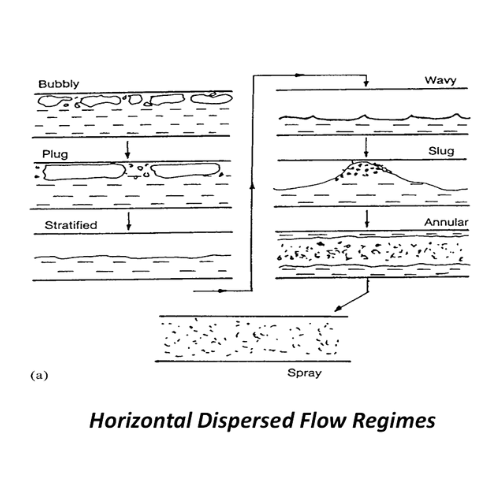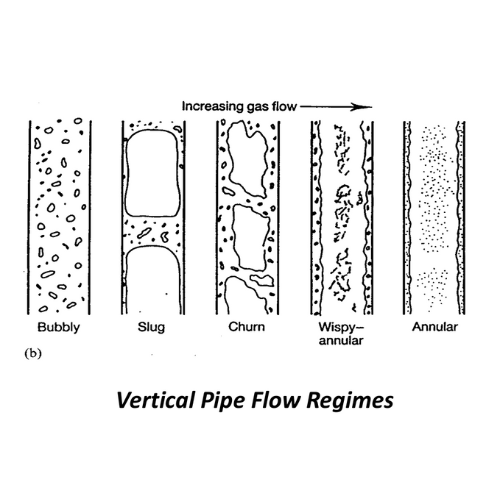Two Phase Flow
- Solid to Gas
- Solid to Liquid
- Gas to Liquid
- Liquid to Liquid



Gas-Liquid Regimes
In gas-liquid flow systems, there are different regimes or patterns in which the gas and liquid phases interact. These regimes can be broadly categorized into two types: homogeneous and dispersed.
Homogeneous Regimes:
- Highly Mixed: In this regime, the gas and liquid phases are thoroughly mixed, resulting in a uniform composition throughout the flow.
- Pseudo Single-Phase: Although there are two distinct phases (gas and liquid), the flow behaves as if it were a single phase due to the intense mixing, making it difficult to distinguish between them.
- High Reynolds Number: This refers to flow conditions characterized by high fluid velocities or turbulence, leading to increased mixing between the gas and liquid phases.
Dispersed Regimes:
- Many Possibilities: In dispersed regimes, the gas and liquid phases exist as distinct entities, with various configurations possible depending on factors such as flow rate, fluid properties, and pipe geometry.
- Horizontal Pipe Flow: This describes the flow of gas and liquid phases within a horizontal pipe, where the phases may exhibit different behaviors such as stratification or dispersed flow patterns.
- Vertical Pipe Flow: Similar to horizontal pipe flow, but in a vertical orientation, where gravitational effects can influence the distribution and behavior of the gas and liquid phases.
Understanding these gas-liquid regimes is crucial for designing and optimizing processes involving the transportation or mixing of gas and liquid phases, such as in pipelines, chemical reactors, and petroleum production systems.
If you want to read more about about two-phase flow, you can visit:
https://www.aiche.org/sites/default/files/docs/webinars/DarbyRTwoPhaseGasLiquidPipeFlow.pdf
